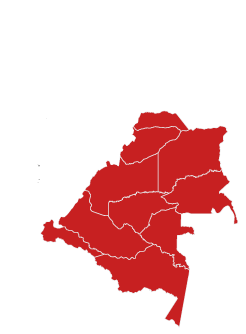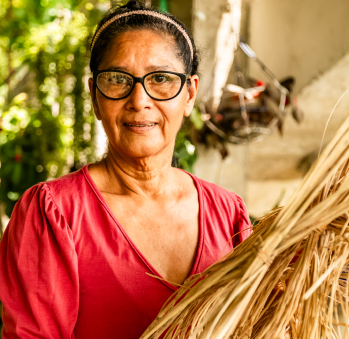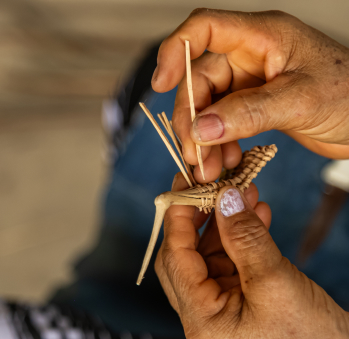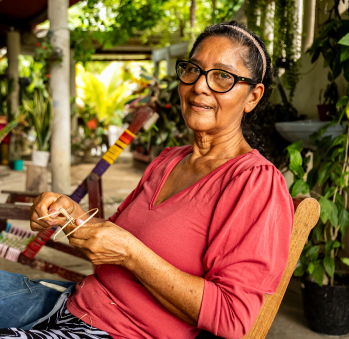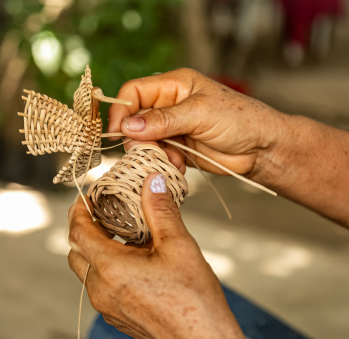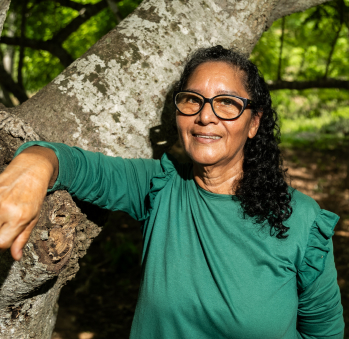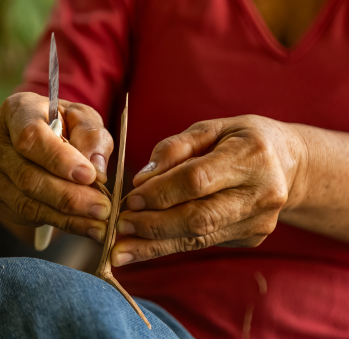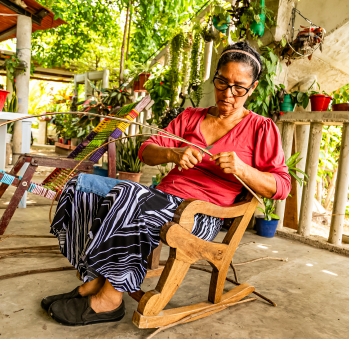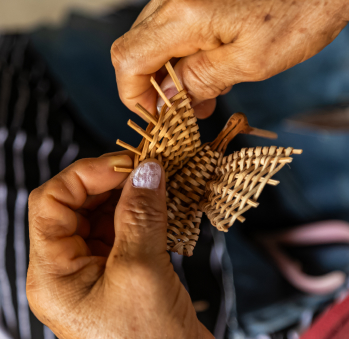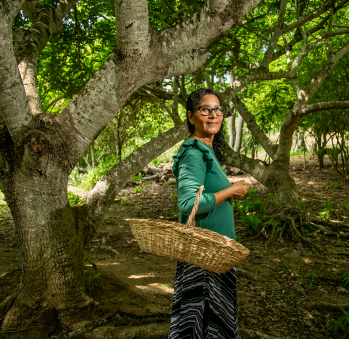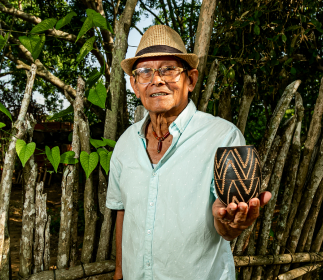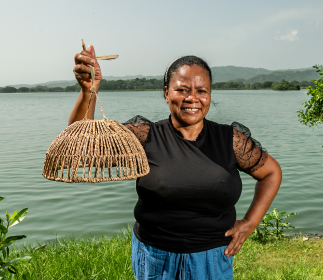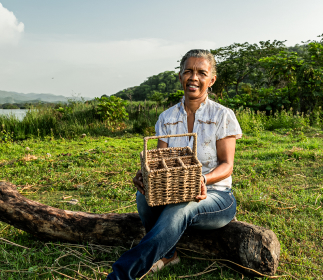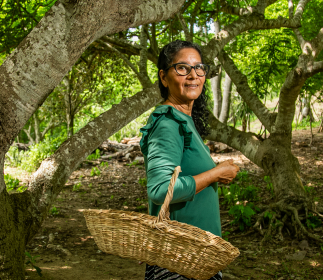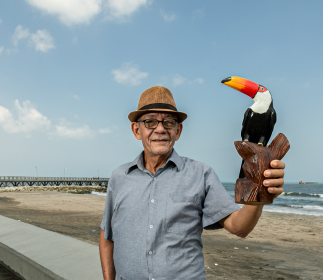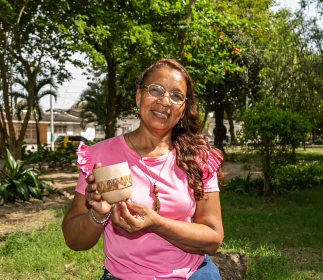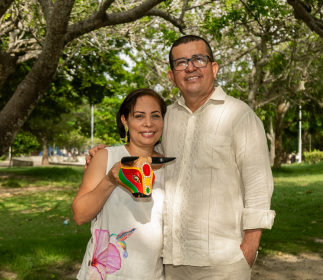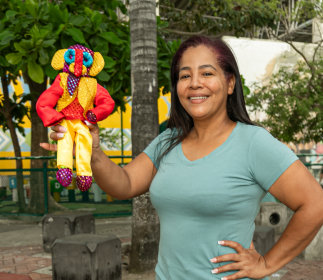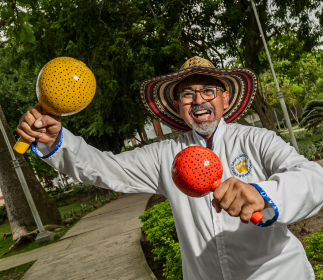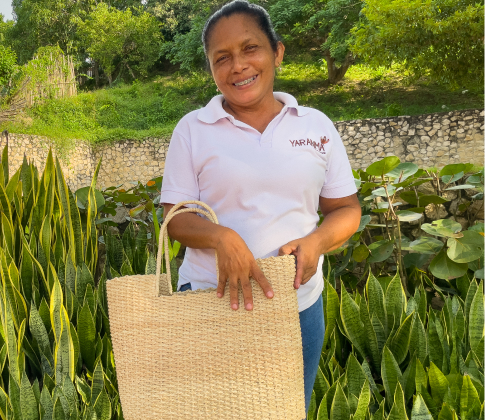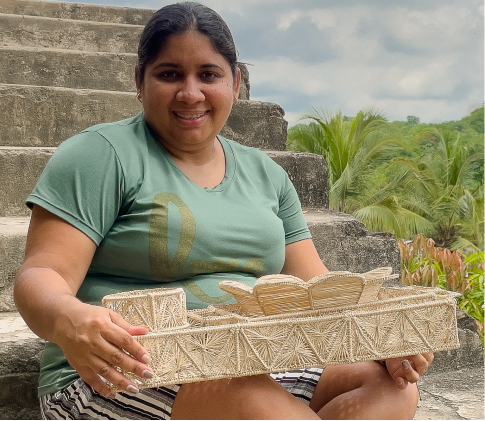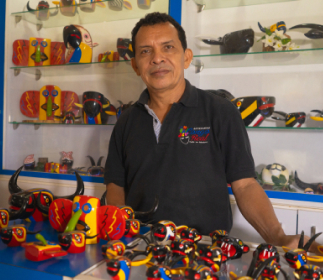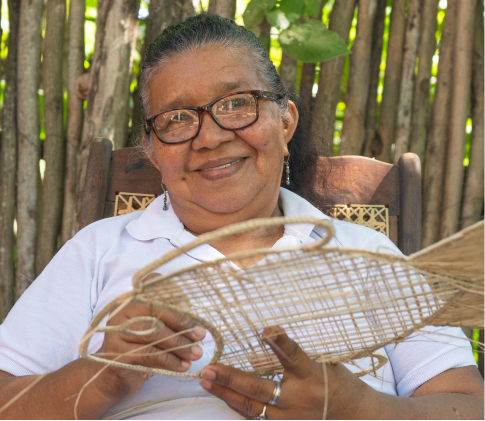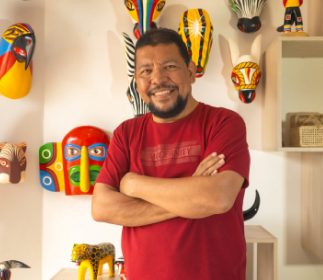Sonia González
Workshop: Cestería Entre Ladera
Craft: Tejeduría
Trail: Atlantico Route
Location: Galapa, Atlántico
SCHEDULE YOUR VISIT
Arriving at Sonia González’s workshop is like stumbling upon a little paradise, as she calls it herself. Her abundant plants not only adorn the place and make it cozy but also attract a little creature that delights her every time it comes to feed. From the red, yellow, and pink flowers of her love knot plants, hummingbirds drink, such important creatures to her practice as a craftswoman of vine. They are the inspiration behind her most popular pieces, the napkin holders made with thin vine fibers upon which a delicate woven hummingbird perches.
It all began in her childhood with a father, Juan González, who gathered vines for a mother who was a basket weaver, Albertina Algarín Retamoso. The mother had the children make the bottoms of the wide baskets with handles and no lids, from a young age. Additionally, she taught them how to strip and clean the vines, as was common in Galapa, where artisans not only weave but also know the plant and how to process it. While the mother wove with the three daughters, the father took the two sons to the countryside to work the fields and bring back their material , and on weekends, he went to Cartagena to sell dozens of baskets produced at home.
One day, Sonia asked her father to describe the city and all the new things he saw. He told her about the market and the multitude of woven products sold there. So Sonia set out to make something different for her father to sell in that diverse market. She was ten years old when she knitted a pair of boots and gave them to him. The day her father went to sell them, Sonia spent the whole day thinking about her boots, and by the time he returned to the town before nightfall, she ran out to ask him about her boots. He teased her, pretended to return her knitting, but the truth was that her boots were the first thing he had sold. That motivated her immensely. She continued making boots and helping her mother. Later, she got married and lived in Barranquilla for a while, where she stopped weaving due to a lack of raw materials, but upon returning to her town, she immediately remembered the baskets her mother had taught her to weave and conducted a survey to see if, after all these years, there were still people interested in them.
While she found customers for the baskets, she realized that things were not as they used to be. The varieties and thicknesses of vines, which were available when she was a child, were no longer abundant. Many of the men who used to gather it were no longer doing so due to their age, and the owners of the forests had devastated the vegetation. So, she opted to make smaller things and that’s how she came up with her woven hummingbirds when, during a training session by the government, each artisan was asked to present a different product, and she knew that her pieces depended on the thickness of the vines she could find. She went to look for her material in an area her father had left untouched and found thin fibers, perfect for making something as delicate as the birds she saw coming to her backyard. Just as when she was taught in school to combine vowels and consonants into words, she learned to combine the basics her mother had given her to speak the language of vines. Likewise, she has taught her two daughters and her grandson to communicate with the material, to gather it, strip it, and sand it so that their language continues to be practiced through the generations.
Craft
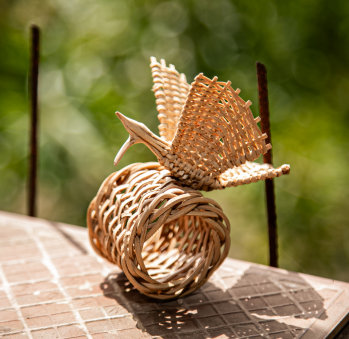
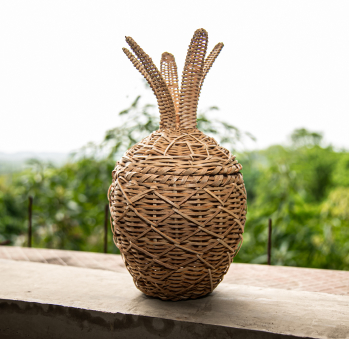
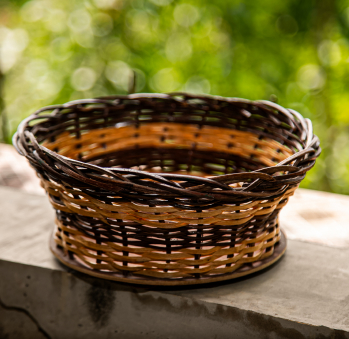
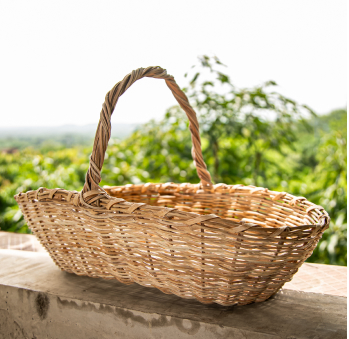
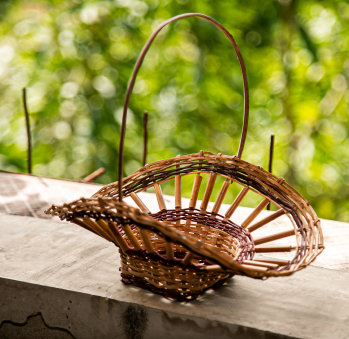
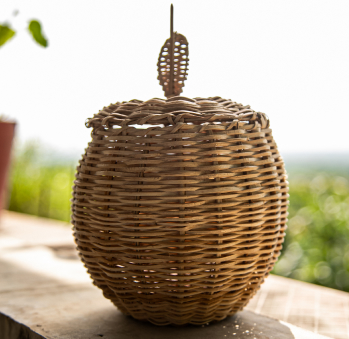
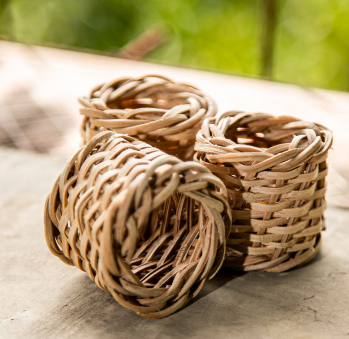







Artisans along the way
Artisans along the way
No puede copiar contenido de esta página

